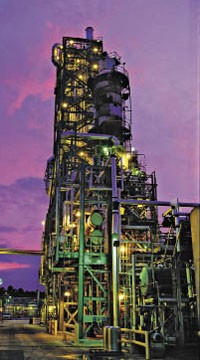Advertisement
Grab your lab coat. Let's get started
Welcome!
Welcome!
Create an account below to get 6 C&EN articles per month, receive newsletters and more - all free.
It seems this is your first time logging in online. Please enter the following information to continue.
As an ACS member you automatically get access to this site. All we need is few more details to create your reading experience.
Not you? Sign in with a different account.
Not you? Sign in with a different account.
ERROR 1
ERROR 1
ERROR 2
ERROR 2
ERROR 2
ERROR 2
ERROR 2
Password and Confirm password must match.
If you have an ACS member number, please enter it here so we can link this account to your membership. (optional)
ERROR 2
ACS values your privacy. By submitting your information, you are gaining access to C&EN and subscribing to our weekly newsletter. We use the information you provide to make your reading experience better, and we will never sell your data to third party members.
Environment
The Hidden Cost Of Coal
by Pamela Zurer, Deputy editor-in-chief
January 16, 2006
| A version of this story appeared in
Volume 84, Issue 3

When I opened our home heating bill last week, it was a shock to find that Washington Gas had doubled the amount it expects us to pay each month on its budget plan. The company blamed the increase on soaring natural gas costs. "If we don't increase your monthly payment now," it explained, "you'll owe a huge amount at the end of the winter."
Our monster heating bill should not have been a surprise. For some time now, C&EN has been reporting on the effects of escalating energy costs on the chemical enterprise. The chemical industry is the biggest consumer of energy among U.S. manufacturing sectors, and in the past months, the pain of high prices and concern about shortages of natural gas-used by the chemical industry both for power and as a raw material-have reached panic levels. The American Chemistry Council has been pushing vigorously for Congress to open access to offshore gas fields currently off-limits to drilling. C&EN Contributing Editor Glenn Hess has been expertly chronicling the ins and outs of this crisis.
Oil prices, too, are well above their levels of a year ago. Although prices dropped for a while from their peak in September, they have been rising again, fueled most recently by misgivings about Iran's restarting its nuclear fuel research program.
The economic impact of ever-climbing energy prices is not the only downside to our country's reliance on oil and natural gas. U.S. dependence on foreign oil unquestionably undermines our national security and warps our foreign policy. It's no wonder, then, that in these uncomfortable times, homegrown coal looks more and more attractive.
U.S. coal reserves total 270 billion tons, about a quarter of the world's proven reserves, according to the Energy Information Administration. The supply seems nearly inexhaustible compared with our dwindling stores of oil and gas. Ninety percent of coal burned in the U.S. is used to produce electricity, EIA says, and coal accounts for just over half of all electric power today. But you can't burn coal in your car's engine or use it as a feedstock for polyethylene. To supplant oil and gas, coal will have to be transformed into substances that behave like oil and gas.
Beginning on page 22, Hess describes the latest efforts toward coal gasification, which turns the solid material into synthesis gas, a mixture of carbon monoxide and hydrogen. New federal backing for clean-coal technology is boosting its chances for commercial success, he reports.
I have no doubt that the intelligence, creativity, and diligence of chemists and chemical engineers will one day lead to efficient and economically viable methods of converting coal to liquid and gaseous fuels and feedstocks. I'm also fairly confident that we can come up with technological solutions to the pollution engendered by using coal, the "dirtiest" fossil fuel, and maybe even cope with carbon dioxide emissions.
But both humans and the environment pay a price for prying coal out of the earth. It was only two weeks ago that the whole country recoiled at the deaths of 12 men trapped in the Sago Mine in West Virginia. Conditions for miners have vastly improved since the federal government took responsibility with the passage of the Coal Mine Health & Safety Act of 1969. But the current rush to profit from an increasing demand for coal coupled with the current Administration's hands-off attitude toward business makes me wonder what other potential tragedies lie hidden belowground.
The environmental impact of coal mining is vast. Surface mining in the western U.S. now dwarfs production from underground mines in Appalachia, once dominant. Some 400 million tons of coal was scraped off of Wyoming in 2004. The violent changes to the landscape are mostly hidden from our sight by the remoteness of their location, but the open-pit strip mines in the northeastern part of the state are so huge they are visible from the International Space Station.
I'm not naÏve enough to believe we'll wean ourselves from fossil fuels in my lifetime. But as we exploit them, let's be honest enough to tally all their costs.



Join the conversation
Contact the reporter
Submit a Letter to the Editor for publication
Engage with us on Twitter